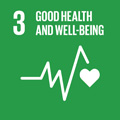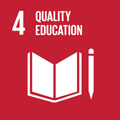- Docente: Claudia Tomasini
- Credits: 6
- SSD: CHIM/06
- Language: English
- Teaching Mode: In-person learning (entirely or partially)
- Campus: Rimini
- Corso: Second cycle degree programme (LM) in Advanced Cosmetic Sciences (cod. 9225)
Learning outcomes
The student has a knowledge of the most important biomolecules, as carbohydrates, lipids, aromatic polyketides, terpenes, peptides and proteins, alkaloids, antraquinones, flavonoids and terpenes. A particular attention will be devoted to the study of structure, biosynthesis and purification methods of natural compounds that are used in cosmetic formulations and are obtained from plants. The student will also learn the chemical properties of the molecules used in the preparation of aromas and fragrances.
Course contents
The chemical components of plants, an overview: hydrocarbons, functionalized hydrocarbons, terpenes, aromatics, carbohydrates, amines, alkaloids, amino acids, nonprotein amino acids, proteins.
Plant natural product biosynthesis: Lipids metabolism. Carbohydrates metabolism. Amino acids metabolism. Nucleic acids metabolism. Metabolism includes anabolism and katabolism. How and why these compounds are synthesized by plants.
Individual fragrance and flavor materials: aliphatic compounds, acyclic terpenes, cyclic terpenes, other cycloaliphatic compounds, aromatic compounds, phenols and phenols derivatives.
Traditional, analytical and preparative separations of natural plants with several examples.
Characterization of natural products: nuclear magnetic resonance spectroscopy, infrared spectroscopy.
Readings/Bibliography
L. J. Cseke, A. Kirakosyan, P. B. kaufman, S. L. Warber, J. A. Duke, H. L. Brielman - Natural Products from Plants Second Edition - CRC Taylor & Francis
H. Surburg, J. Panten - Common Fragrance and Flavour Materials - Wiley-VHC Verlag
Teaching methods
The topics listed in the program will be fully covered. In the exercise module, students will do experiments of aromas and fragrances extraction, working in pairs.
Assessment methods
The preparation is tested by a oral exam.
Teaching tools
Overhead projector, PC, blackboard
Office hours
See the website of Claudia Tomasini
SDGs



This teaching activity contributes to the achievement of the Sustainable Development Goals of the UN 2030 Agenda.
